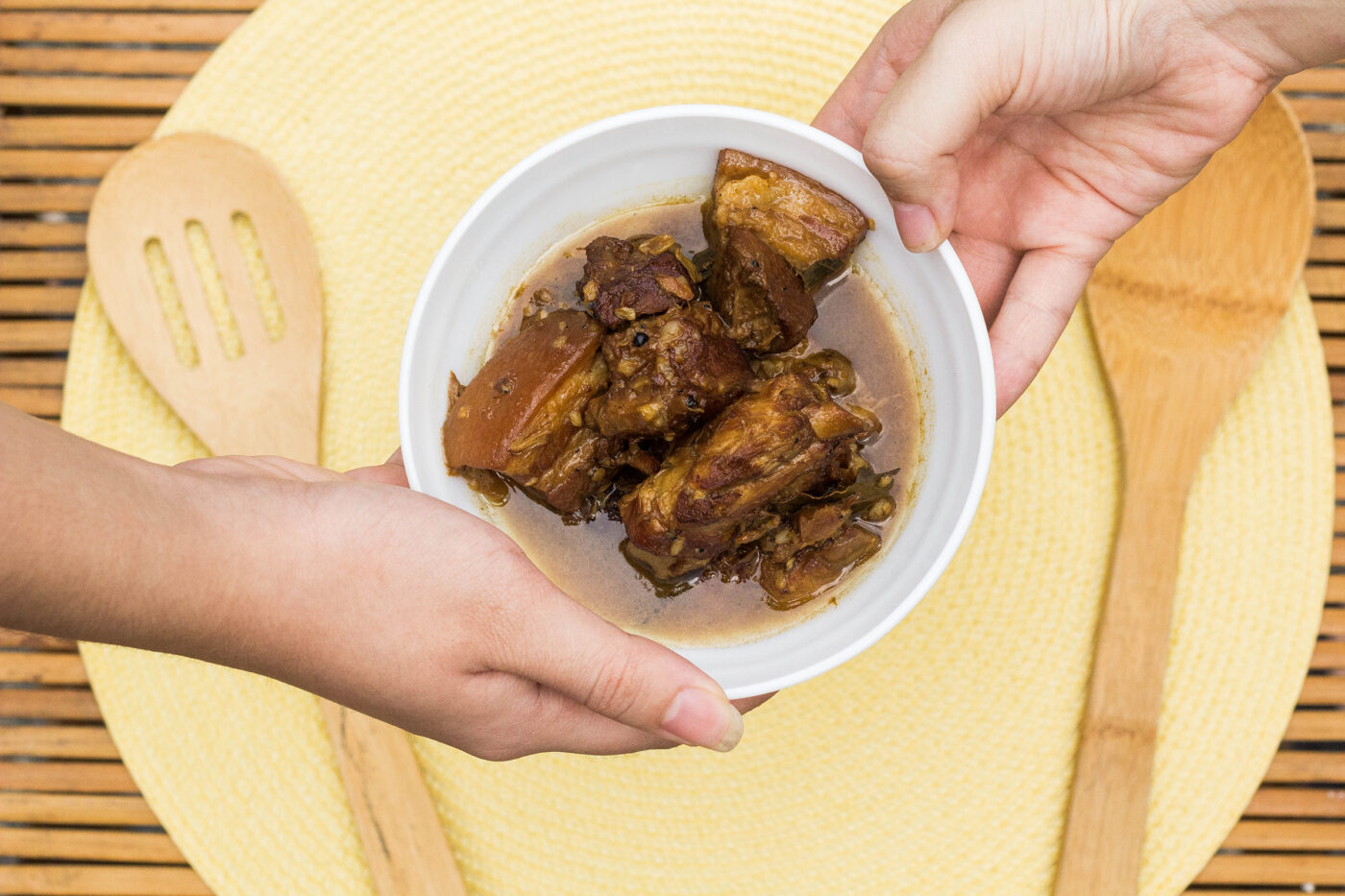The flavors of Asia have certainly gone far beyond the boundaries of the continent itself. Chinese, Vietnamese, Japanese and Thai cuisines have become staples in countries miles away from their homeland. However, one thing is notably missing from this seemingly diverse landscape: Filipino restaurants. Where in the world is the adobo?
The supporters of the Kulinarya movement, a collective effort that aims to create a greater appreciation for Filipino food both here and abroad, are ready to tackle this question head on. Through the collaboration of the Asia Society, the Department of Tourism (DOT), Anvil Publishing and top local chefs like Glenda Barretto, Jessie Sincioco and Claude Tayag, the movement was formally launched with the publishing of Kulinarya: A Guidebook to Philippine Cuisine in 2008.
The cookbook, which distills the wisdom and experiences of Filipino chefs into various preparation and presentation practices, is just one way of proudly presenting Filipino flavors. Since then, more steps have been taken to bring Filipino cuisine out of lola’s home kitchen and into mainstream dining, one spoonful at a time.
Calamansi complex
In recent years, there have been few attempts to promote Filipino cuisine overseas. Rogue’s Assistant Editor and resident food writer Michelle Ayuyao says that the dismissal of our cuisine as “lutong bahay” or “lola’s cooking” is partly to blame for this lack of international recognition. “It’s only recently that people see it as a grander thing,” she explains.
Another difficulty lies in preparing Filipino food in a foreign place where certain ingredients aren’t available, such as calamansi. “You don’t have the right ingredients so you have to look for alternatives,” says Ayuyao. The use of substitutes often leads to a change in flavor, which means that the authenticity of these dishes can be compromised.
What constitutes authentic Filipino food, however, is also up for debate. “I don’t want to use the word, but there’s no other way to describe it. I guess it’s the ultimate fusion,” says Pepper Senior Editor Meya Cortez. Aside from the fact that we’ve incorporated Chinese, Spanish and American cuisine into our own, the recipe for the same dish even varies from region to region.
Fortunately, the accomplishments of certain restaurants abroad prove that these challenges can be overcome. For instance, Aux Iles Philippines, a Filipino fine dining restaurant established by Philippine culinary icon Nora Daza in the mid-1960s, was a top Asian restaurant in Paris in its heyday. Many French celebrities frequented the restaurant, including actress and famed sex symbol Brigitte Bardot.
Despite its closure in 1979 due to personal family reasons, its brush with success still serves as reminder that introducing Filipino cuisine abroad holds a lot of promise. “[Paris] is the culinary capital of the world,” says restaurateur, TV chef and food columnist Sandy Daza. “In short, Philippine cuisine can make it.”
Beyond the kusina
Aside from Paris, the Kulinarya movement is taking root in other major cities too. New York’s East Village, for one, is home to two Filipino restaurants: Maharlika, which has a modern take on home-cooked Filipino food, and Jeepney, which is a self-described Filipino gastro pub. Sisig, arroz caldo, kare kare, dinuguan and the infamous balut are just some of the dishes these restaurants are introducing to the American public.
Philippine cuisine has been making waves online as well. Just recently, BuzzFeed’s banner article featured a list by Melissa Harrison entitled “24 Delicious Filipino Foods You Need In Your Life.” With BuzzFeed being one of the most frequented websites on the Internet, the existence of this list indicates that our dishes are slowly becoming more recognizable outside the Filipino household.
Ayuyao believes that it is young blood that’s pushing the movement further. “There are a lot of younger people that are more interested in giving importance to the culinary industry. Before, we left it to the older chefs that studied this, that were in the kitchen for several years. But now, there are a lot of people that are into food—and not necessarily fine dining.”
This surge of interest in the culinary arts has contributed to the Kulinarya movement in that people now seek to “correct wrong practices,” as chef and restaurateur Myrna Segismundo explains in a 2013 feature in The Manila Bulletin. In fact, this desire to encapsulate the essence of Filipino cuisine was what led to the creation of the Kulinarya cookbook.
However, these guidelines are not intended to stifle the creativity of up and coming chefs. “‘So, I know French technique, but how come I can’t use Filipino ingredients?’ [Younger chefs] are really looking to use their technique that they know, but bring back their culinary heritage,” says Cortez. Ultimately, these techniques are meant to highlight the unique qualities of our cuisine and ensure that nothing gets lost in translation.
Best food forward
After releasing the Kulinarya cookbook in 2008, the chefs behind the project took to various media outlets, such as newspapers, magazines and lifestyle blogs, to spread the word. Their most recent accomplishment was the release of the second edition of the cookbook—which includes new sections and recipes from chefs like Margarita Fores, Myrna Segismundo and Conrad Calalang—in November 2013.
Although the cookbook was an excellent way of launching the movement, the minds behind Kulinarya have realized that much more can still be done. For one, they plan to launch a website targeted towards the agribusiness sector; it will feature information on produce standards, cooking equipment and packaging. Training programs are also in the works for those interested in working professionally in the food industry.
The DOT also intends to promote our local cuisine through Kulinarya Filipina, an integral part of the Cultural Tourism Program. It provides “Kulinarya Food Trips” that take people to Ilocos, Pampanga, Bulacan, Negros, Davao, Iloilo and other regions in the country to familiarize them with their respective specialties and delicacies.
Despite these efforts, the Kulinarya movement still has a long way to go. “I don’t think there’s necessarily an end-goal where they say, ‘Okay! We’re good. Stop na,’” explains Ayuyao. “I think it will be an ongoing long-term thing.”
For Laurel Fantauzzo, a former New York Magazine food writer and currently a lecturer at the Department of English, food is the gateway to any culture. “A cuisine’s preparation, presentation and consumption will speak to a culture’s resources, pride and sense of welcome.” Viewed through this perspective, perhaps the Kulinarya movement is ultimately a never-ending one because as our culture evolves, so does our understanding of our cuisine.
As Filipinos continue on this mission to bring adobo and many of our other classic dishes to more and more people, Fantauzzo keeps an optimistic view of the future. “With champions like chefs Amy Besa, Romy Dorotan and other fine chefs and writers pushing the information forward, the movement can only grow. The diversity of Filipino food is delicious. Prepared with love, it speaks for itself.”
[seperator style=”style1″]Dessert madness[/seperator]By Marguerite R. Andrews
Illustrations by Nikki G. Solinap
Whether it’s ensaymada, pastillas or ube sorbetes, our penchant for sweets is undeniable. These days, restaurants are reinventing our childhood favorites with their quirky take on classic Filipino desserts.
[columns][three-columns]
 Champorado ice cream with dilis and Green Mango ice cream with bagoong, Sebastian’s Artisanal Ice Cream
Champorado ice cream with dilis and Green Mango ice cream with bagoong, Sebastian’s Artisanal Ice Cream
Sebastian’s never ceases to amaze with its unique flavors. Dilis adds a crunch to sweet champorado ice cream, while bagoong gives a salty kick to the sour green mango flavor.
[/three-columns][three-columns]
Halo-halo Milkshake, Johnny Rockets
The most famous Filipino dessert finally comes in beverage form. Made with thick ube ice cream and topped with whipped cream and pinipig, this is the perfect way to cool down on a hot summer day.
[/three-columns][three-columns]
Isabel, Crisostomo
Named after Maria Clara’s aunt in Noli me Tangere, the Isabel is made up of leche flan fried in spring roll wrappers and served with a scoop of vanilla ice cream.
[/three-columns][/columns]
[columns][three-columns]
Bibingka Soufflé, Classic Cuisine
A Christmastime favorite is spruced up with this bibingka soufflé. Featuring queso de bola, salted egg and toasted coconut, this dessert is light and oozes with cheese.
[/three-columns][three-columns]
Taho gelato, Bono Artisanal Gelato
Bono gives taho vendors a run for their money with a creamier take on the popular sweet. This taho gelato’s flavors stay true to the original thanks to its arnival and sago toppings.
[/three-columns][three-columns][/three-columns][/columns]











